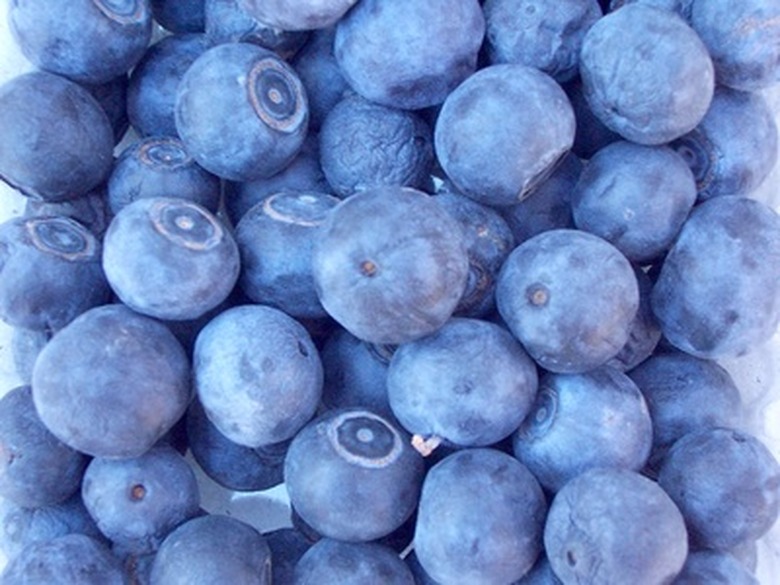How To Plant Blueberry Bushes In Kansas
Things Needed
- Soil pH test
- Ground rock sulfur
- Organic compost
- Tiller
- Shovel
- Acidic peat moss
- Water
- Pruning clipper
- Mulch
- Ammonium sulfate
- Bird netting
Blueberries grow well throughout North America as long the soil has the proper care and maintenance to keep it acidic. Highbush perennial blueberry varieties grow well in Kansas as they have a long life span with an approximate 120-day ripening season. In Kansas. the plants flower in early spring and produce fruit in late June through July. A home garden of two to three blueberry bushes will produce enough berries for a family of four to enjoy.
Step 1
Select a planting location for the blueberries that has well-draining soil and a minimum of six hours direct sunlight, preferably during the morning. The plant also requires an acidic soil.
- Blueberries grow well throughout North America as long the soil has the proper care and maintenance to keep it acidic.
- Highbush perennial blueberry varieties grow well in Kansas as they have a long life span with an approximate 120-day ripening season.
Step 2
Prepare the growing bed during the fall season prior to planting in spring. Test the soil with a pH test kit to verify it is acidic with a pH of 4.8 to 5.2. If necessary, add ground rock sulfur to the planting area to lower the pH value.
Step 3
Work at least 3 inches of organic compost or peat moss into the soil with a tiller to increase the nutrient value and moisture retention properties of the Kansas silt loam soil.
Step 4
Dig a hole that is slightly deeper than and twice as wide as the container the plant came in. Add approximately one inch of acidic peat moss to the bottom of the hole and set the plant in with the top of the root ball at ground level. Fill in soil around the root ball and gently pack it in place to limit air pockets.
- Prepare the growing bed during the fall season prior to planting in spring.
- Work at least 3 inches of organic compost or peat moss into the soil with a tiller to increase the nutrient value and moisture retention properties of the Kansas silt loam soil.
Step 5
Water the blueberry bush after planting by soaking the soil to a depth of at least 6 inches. Provide supplemental water so the bush receives 1 to 2 inches of water when rainfall amounts are low.
Step 6
Cut back the branches by 50 percent, as this will promote new branch growth. Pick off the blossoms the first two years to prevent berry growth and to increase plant growth and fruit production in the following years.
Step 7
Apply a 3-to-4-inch layer of bark or sawdust mulch around the bushes after planting to increase soil moisture retention.
Step 8
Apply an ammonium sulfate fertilizer late in the season of the planting year. Fertilize two-year-old and older bushes with ammonium sulfate in the spring as the plants begin to bud. Additional fertilizer applications are not required.
- Water the blueberry bush after planting by soaking the soil to a depth of at least 6 inches.
- Apply a 3-to-4-inch layer of bark or sawdust mulch around the bushes after planting to increase soil moisture retention.
Tip
Bird netting placed over the plants during berry production prevents loss to birds
